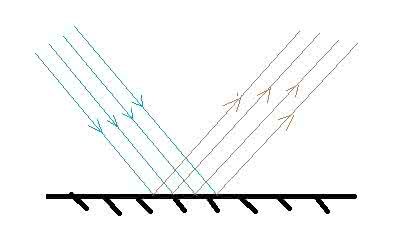Dying Light
Time Limit: 2000/1000 MS (Java/Others) Memory Limit: 131072/131072 K (Java/Others)
Total Submission(s): 513 Accepted Submission(s): 122
Problem Description

LsF is visiting a local amusement park with his friends, and a mirror room successfully attracts his attention. Inside the mirror room, there are n plane mirrors standing vertically on the ground. They are placed end-to-end and face-to-face so that if you overlook the room, you can find a convex hull and the all the reflector surfaces are inside the pattern. The height of the mirror is not important in this problem.
Due to imperfect manufacturing techniques, mirrors can't reflect light without lose of energy. Each mirror has a reflection efficiency k, which means if the incident light's intensity is I, the reflected light's intensity will be reduced to kI. The only exception could happen when the light precisely goes to the two mirrors' junction. In that case, the light will be completely absorbed instantly. Note the laws of reflection of light applies in all other situations, that the angle of incidence equals the angle of reflection.
Now LsF stands inside the mirror hall, and shoots a laser beam paralleled to the ground using his laser pointer. Unfortunately, his laser pointer can only shot laser beams with intensity of 1. What's worse, a laser beam is considered disappeared if its intensity is below 10−4. There's not much magnitude distance between the two numbers.
LsF wants to know how many touches can his laser beam make with mirrors before it disappears.
Input
The first line contains an integer n(3≤n≤1000), indicating the number of mirrors;
Then n lines follow. The ith line contains three real numbers xi,y, which means the ith mirror's one end is at position (xi,y and another end is at (xi+1mod n,ymod n), and its reflectivity is ki.
Next there are two real numbers Vx,Vy(-109≤Vx,Vy≤109), indicating the initial direction vector of the laser beam.
LsF is standing at the origin (0, 0).
Then n lines follow. The ith line contains three real numbers xi,y, which means the ith mirror's one end is at position (xi,y and another end is at (xi+1mod n,ymod n), and its reflectivity is ki.
Next there are two real numbers Vx,Vy(-109≤Vx,Vy≤109), indicating the initial direction vector of the laser beam.
LsF is standing at the origin (0, 0).
Output
Output an integer in one line, the number of touches the laser beam could make before it disappears.
Sample Input
4 1 2 0.5 -1 0 0.5 1 -2 0.5 3 0 0.5 0 1 4 1 1 0.5 -1 1 0.5 -1 -1 0.5 1 -1 0.5 1 1
Sample Output
14 1
Source
分析:由于LsF一开始不再镜子上,按题面模拟即可。
由于反射率<=0.9 0.9^100<1e-4,所以反射次数不会超过100次。
每次暴力判断和哪个镜子相交,以及有没有在镜子焦点上。
由于反射率<=0.9 0.9^100<1e-4,所以反射次数不会超过100次。
每次暴力判断和哪个镜子相交,以及有没有在镜子焦点上。
下面给出AC代码:
1 #include <cstring> 2 #include <algorithm> 3 #include <cstdio> 4 #include <iostream> 5 6 #define MAXN 5000 7 #define eps 1e-9 8 9 struct point 10 { 11 double x,y; 12 point(double a = 0,double b = 0) 13 { 14 x = a; y = b; 15 } 16 friend point operator + (point a,point b) 17 { 18 return point(a.x+b.x,a.y+b.y); 19 } 20 friend point operator - (point a,point b) 21 { 22 return point(a.x-b.x,a.y-b.y); 23 } 24 friend double operator ^ (point a,point b) 25 { 26 return a.x*b.y-a.y*b.x; 27 } 28 friend double operator * (point a,point b) 29 { 30 return a.x*b.x+a.y*b.y; 31 } 32 friend point operator * (point a,double b) 33 { 34 return point(a.x*b,a.y*b); 35 } 36 friend point operator * (double a,point b) 37 { 38 return point(a*b.x,a*b.y); 39 } 40 41 }; 42 43 struct line 44 { 45 point s,e; 46 line(point a = point(0,0),point b = point(0,0)) 47 { 48 s = a; e = b; 49 } 50 }; 51 52 point p[MAXN+5]; 53 double c[MAXN+5]; 54 int n; 55 point s[2]; 56 57 int sgn(double x) 58 { 59 if (x>eps) return 1; 60 if (x<-eps) return -1; 61 return 0; 62 } 63 64 point Get_Intersect(line a,line b) 65 { 66 double u=(a.e-a.s)^(b.s-a.s); 67 double v=(a.s-a.e)^(b.e-a.e); 68 point p; 69 p.x=(b.s.x*v+b.e.x*u)/(v+u); 70 p.y=(b.s.y*v+b.e.y*u)/(v+u); 71 return p; 72 } 73 74 int main() 75 { 76 // freopen("input.txt","r",stdin); 77 while(scanf("%d",&n)!=EOF) 78 {for (int i=0;i<n;i++) scanf("%lf%lf%lf",&p[i].x,&p[i].y,&c[i]); 79 p[n] = p[0]; 80 s[0] = point(0,0); 81 scanf("%lf%lf",&s[1].x,&s[1].y); 82 83 double now = 1.0; 84 int ans = 0; 85 bool flag = 1; 86 point temp; 87 point temp2; 88 line l1,l2,l3,l4; 89 while (now > 1e-4) 90 { 91 ans++; 92 for (int i=0;i<n;i++) 93 { 94 if (!sgn((p[i]-s[0])^s[1])) 95 { 96 now = 0; 97 flag = 0; 98 break; 99 } 100 } 101 if (!flag) break; 102 for (int i=0;i<n;i++) 103 { 104 if (sgn((p[i]-s[0])^s[1]) > 0 && sgn(s[1]^(p[i+1]-s[0]))>0) 105 { 106 l1 = line(p[i+1],p[i]); 107 l2 = line(s[0],s[1]+s[0]); 108 temp = Get_Intersect(l1,l2); 109 110 l3 = line(temp,point(p[i+1].y-p[i].y,p[i].x-p[i+1].x)+temp); 111 l4 = line(s[0],point(p[i].x-p[i+1].x,p[i].y-p[i+1].y)+s[0]); 112 113 temp2 = Get_Intersect(l3,l4); 114 temp2 = 2*temp2-s[0]; 115 s[0] = temp; 116 s[1] = temp2-s[0]; 117 now *= c[i]; 118 break; 119 } 120 } 121 } 122 printf("%d ",ans); 123 } 124 return 0; 125 }